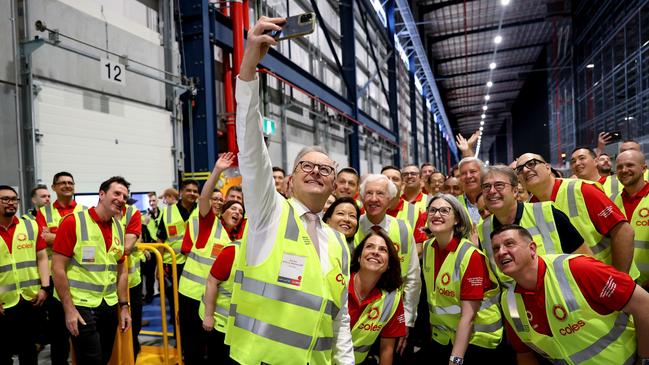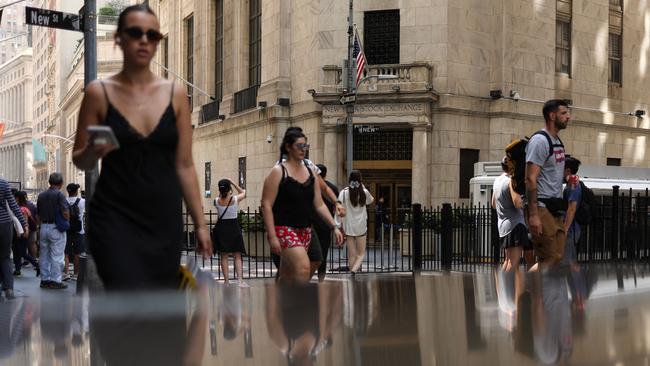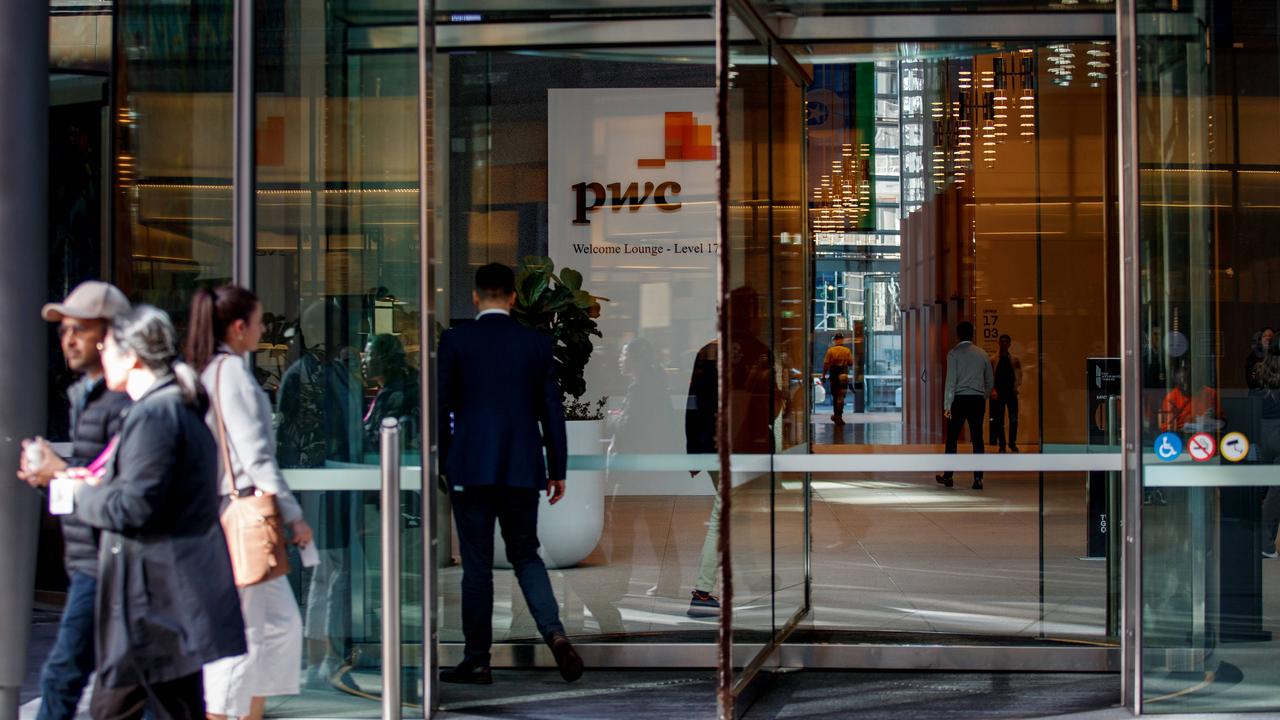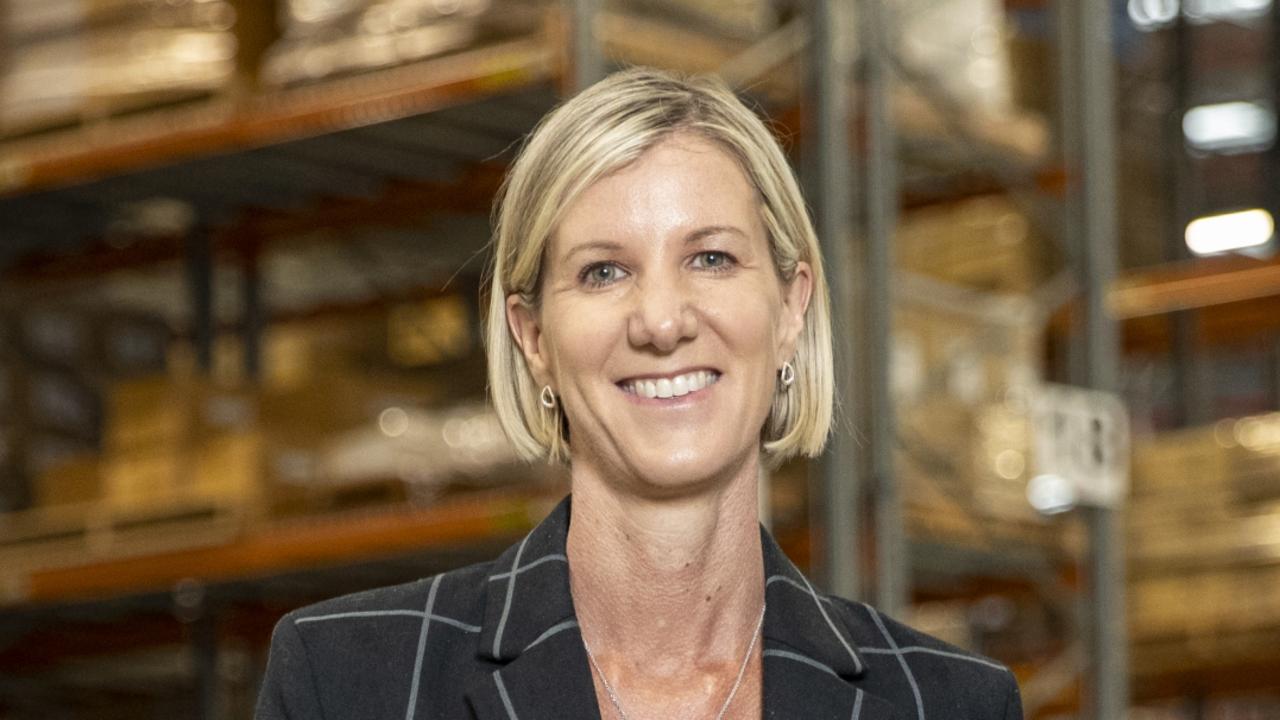Why Coles’ $1bn bet is good for supermarket competition
The Australian got a look at Coles’s ultra-high-tech new warehouse that has just given it the edge over rival Woolworths.

Business
Don't miss out on the headlines from Business. Followed categories will be added to My News.
Coles boss Leah Weckert isn’t lost for words when describing the scale of her billion-dollar hi-tech warehouse more than 40km to the west of Sydney. Although in this case, simplicity works.
“If it felt big when you were driving up, it’s because it is big,” she says.
As The Australian approached the new Kemps Creek warehouse, the multi-story building certainly loomed up over the ridge. The size spans the equivalent of around 25 rugby league fields or nine MCG playing surfaces.
And in many ways, it’s a big deal for the long-term positioning of Coles. Weckert was joined by Prime Minister Anthony Albanese and Coles chairman James Graham to mark the opening.
Kemps Creek is the second of Coles’ new robotic distribution centres that will serve supermarkets across NSW and ACT. The facility promises to get more goods into its supermarkets faster and more reliably. There are far better scale benefits as millions of cartons are processed, making for lower unit costs. Each incremental gain across the network promises better returns for investors and allows Coles to keep prices constant across the state.
“Whether it’s Griffith or Eden or Broadway in the city, they will all have the same prices on your groceries,” Weckert says in an interview.

The scale as well as the tech inside the walls gives it an edge over rival Woolworths, which has distribution over several sites around Sydney.
Inside Kemps Creek, robotic lifts work around the clock selecting boxes and packing them onto pallets to be put on trucks and sent to stores across the state. Nearly the entire process is automated and it is blindingly fast.
Orders can be tailored right down to the aisle number of individual stores. This speeds up the process at the other end of the chain and keeps the shelves full.
The building is a mighty bet by the Coles board. It’s easy to forget it is still people making these big calls, but it underscores the importance of businesses backing themselves with ultra-long-term investments. Nor could a smaller retailer – which some politicians are pushing for – match the investment needed or bring the smart tech and training to Australia to serve customers.
The warehouse is part of $1.4bn spend rebuilding the supermarket’s supply chain from the ground up. It’s the biggest single investment in Coles’ more than 100-year history.
Planning took years. In fact it was the first decision taken by the then newly formed board when Coles was spun off from Wesfarmers in 2018. The business case took years in the making before board sign-off, Weckert adds.
Kemps Creek is the second of two warehouses using the robot technology of German logistics partner Witron. The first opened in Redbank outside Brisbane last year and has seen a marked uplift in store deliveries as it ramps up.
Combined, the two distribution centres represent a $1bn outlay. Still to come are the $400m more complex warehouses furnished with mobile robots, to pick and pack orders to turbocharge the home delivery service.
These are being delivered by British e-commerce company Ocado and, unlike the Witron project, are proving to be more problematic, with Coles last year forced to top up its investment.
In opening Kemps Creek, Albanese steps into the charged political debate over supermarkets and big business. However, cutting the ribbon hopefully sends a message about where the PM stands on the populist push to break up supermarkets. Peter Dutton last month found common ground with the Greens in saying he wants to force Coles and Woolworths to sell stores if they are found to be too powerful.
On the same day the Reserve Bank signalled the cash rate was staying on hold at least to the end of the year, Albanese said Coles’ investment was an example of confidence in the economy.
Projects like this provided more highly skilled and better-paid jobs that were safer for workers, the PM said. A roster of more than 400 staff will work at Kemps Creek around the clock.
Albanese nudged the politics of supermarkets, saying: “It does provide that certainty of knowing that the goods that you want will be available. It will also lead to a more efficient decisions that lead to lower prices. We want that as well.”
Given the relatively smooth delivery of the two Witron sites, Weckert is mulling whether to push ahead with a third in Coles’ home state in Victoria. She wouldn’t be drawn on specifics but said Coles was “starting to think through what further investments we would want to make into the supply chain for the future”.
‘Valuation bubble’ makes this flash crash different
There’s an expression that goes around markets: this time it’s different. Except this time it really is different.
Unlike the dramatic global market crashes of the great financial crisis or the stomach-churning drop during the start of the Covid-19 pandemic, the difference with Monday’s meltdown is that we largely know the parameters of all the bad news out there.
The US economy is slowing; China’s growth is softening and this is playing out in commodity prices, while corporates and consumers around the world are deeply cautious. In addition, the world has been living with heightened geopolitical shocks for more than two years now.
For some time the Reserve Bank of Australia has warned that inflation here is too high and too sticky. It reiterated that view on Tuesday – and that means there’s no case for a cut.
There is a veiled threat too of another increase if Australia can’t curb inflation. Governor Michele Bullock is “not ruling anything in or out”. At the very least, it looks as though interest rates are hold until the end of this year.
However, for investors there are no great unknowns such as the scale of hidden or exotic bad debts like in the 2008, a global pandemic, or where the contagion of the US banking crisis of last year is likely to stop. The uncertainty is over the outlook.
That makes this week’s fall a “valuation crash”. It follows a market running red hot and largely bid up on the back of a new technology boom, which this time was in artificial intelligence. And sky-high valuations finally snapped.

The valuation boom spilt out into other shares as everyone wanted a piece of the market action. This resulted in both the tech-heavy Nasdaq and Wall Street’s S&P 500 hitting record highs in recent weeks. Australia shares also notched up record closes as companies like Commonwealth Bank surged to record territory.
Indeed, international investor demand sent CBA shares into the stratosphere, making it one of the most expensive big bank stocks in the world. It is priced more like a high-growth stock, trading at more than 22 times forward earnings and more than three times book value.
The source of much of the market pain of the past few days can be traced back to the Bank of Japan (BOJ) and its call to start unwinding that country’s historic low interest rate. This collided with a shifting view on the outlook of the US economy from softer-than-expected jobs data.
Last week’s Japanese rate hike and hint of more to come spurred the near 13 per cent plunge in Tokyo shares on Monday, while Wall Street cracked on a shifting outlook for the economy.
Australian shares have been caught in the cross current between a potentially rising Japanese interest rate and the looming cuts of US interest rates – and concerns among some that the economy is slowing faster than thought. The jury is still out on that one.
Jobs figures were soft but manufacturing data on Monday told a different story.
Unwinding
Even so, this action is the unwinding of trillions of dollars in capital flows where investors have borrowed in cheap Japanese yen to invest in higher yielding shares and bonds around the world. This is the so-called carry trade.
The carry trade depends on the borrowing currency remaining cheap, and market volatility remaining low. Recent moves in Japan mean both of those factors are starting to turn against investors, forcing them to close out their positions.
Bullock says there was a bit of a feeling the share selldown “was a bit of a over-reaction in some ways. It was a reassessment by some parts of the market as to the US economy”.
But markets are reacting about the “considerable uncertainty about the outlook”.
This week’s violent reaction means the BoJ is likely to move ultra conservatively when it considers how to remove the stimulus in the economy there and keep early signs of inflation in check.
At least another round of interest rate hikes will be delayed until the market can process an orderly unwinding. Where another rate rise in Japan had been pencilled in as early as September or October, this will be pushed back several months.
Just as Japan started it, by walking back on tightening talk it has ended it for now.
US Futures are pointing to a bounce on Wall Street while Australian shares are back in positive territory (up 0.4 per cent Tuesday).
Tokyo late Tuesday was up more than 10 per cent. The rebound might be on, but the volatility is there.
johnstone@theaustralian.com.au
Originally published as Why Coles’ $1bn bet is good for supermarket competition



